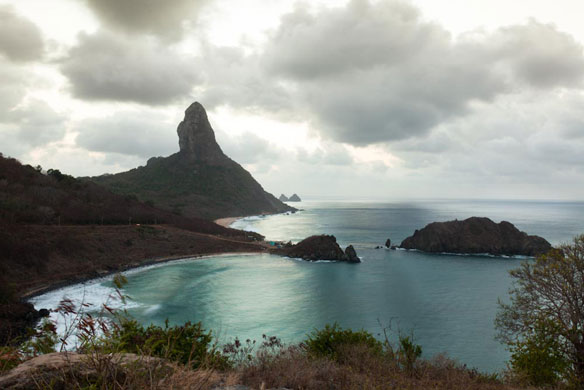
Coastal Brazil. Photograph courtesy of: © Brian Hodges
Abstract; By Journal Of Integrated Coastal Management “Erosão Costeira, Tendência ou Eventos Extremos? O Litoral entre Rio de Janeiro e Cabo Frio, Brasil”
The coastline eastward from Rio de Janeiro up to Cape Frio is characterized by long and straight beach barriers frequently backed by lagoons and segmented by rocky headlands. No continental sediments are delivered to the continental shelf due to presence of the sandy beach barriers. With a generally east-west direction the coastline is directly exposed to storm waves from the south, with the longshore sediment transport tending to be in equilibrium.
Episodes of coastal erosion associated to storm events due to the passage of cold fronts from the south induced a general retrogradation of the backshore scarp as also widespread wave overwash. Urbanization of the coast is discontinuous and occur in clusters with the constructions frequently build in the immediate proximity of the beach. After a severe storm in May 1991 houses as also part of the pavement of the coastal road were destroyed. Subsequent storms also affected the coast but with less damage to proprieties.
Considering the general vulnerability of the coast due to storm wave attack and associated risk to the urbanized areas, a question is posed about the stability of the shoreline considering the evidences of erosion as either a general trend of a backward shift of the coastline or only a response to extreme events with subsequent recovery of the shoreline position.
In an attempt to answer these questions topographic profiles were measured along different compartments of the coast for comparison with previous surveys dated back to the second half of the last century as also a continuous monthly survey carried out during fourteen years, from 1996 to 2010, encompassing a wide range of weather conditions. The results indicated that, in spite of the wide variation in width and volume of the beach profiles, no evidence of retrogradation of the shoreline during the last three to four decades was found.
A backward shift of the foredune crest after storm events with a subsequent trend to return to the previous position was found on the beach-foredune system near Cape Frio indicating the occurrence of a dynamic equilibrium between the most frequent northeast offshore wind and the less frequent onshore wind associated to wave overwash. The development of an offshore bar, after one of the most extreme storm events, with a greater volume of sand as the one of the foredunes, suggests that the erosion caused by storm surges may be locally compensated by the transfer of sands from the innershelf toward the coast with the consequent increase of the foreshore sediment stock.
This may explain why the whole coastal stretch of the south coast of Rio de Janeiro state remains relatively stable in spite of the absolute absence of continental sediment input. This may also be a factor to be considered as a partial compensation for a sea level rise when associated to an increase in frequency and intensity of storm events.









